Japan’s Noto Peninsula is the perfect setting for a cultural cycling tour
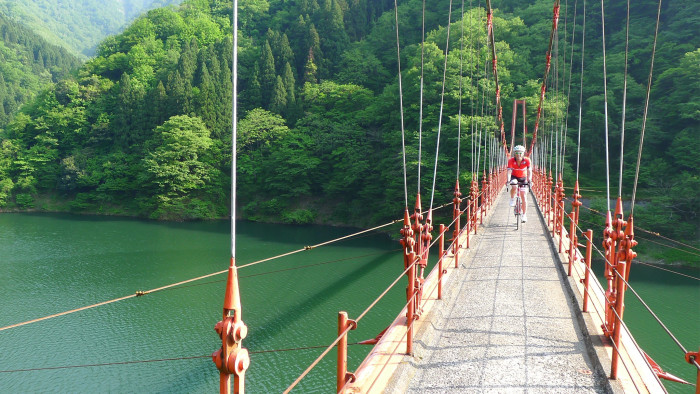
Simply sign up to the Life & Arts myFT Digest -- delivered directly to your inbox.
Blood is throbbing at my temples, the air is rasping at my throat, and my brain is blaring Donna Summer’s “Hot Stuff” on repeat. The steep road before me will not relent. Three hours ago I was in the concrete matrix of Tokyo; now I’m climbing through a vibrant green forest of cedar and pine, having pedalled past glistening rice paddies, the occasional Shinto shrine and a Buddhist temple.
A mildly eccentric bike engineer called Takuya Kodama had handed me my bike outside the arrivals hall of Noto airport on the Noto Peninsula. It came with a handlebar-mounted Samsung tablet navigation system and Takuya’s tips on the ideal cycling rhythm. He played the disco hit on a portable CD player while bopping up and down for emphasis, and now I’m carrying that comically incongruous soundtrack through the raw, verdant beauty that surrounds me.
Noto Hanto, the Noto Peninsula, juts out 100km into the Sea of Japan, midway down the country’s west coast, and is a one-hour flight north-west of Tokyo. It is as peaceful as Tokyo is frenetic. Every now and then I pass a person, typically aged, leathery-faced and hunched, toiling over rice paddies or the immaculate gardens of neat, wooden houses in tiny rural villages. They pause to see a western tourist on a bike; we nod our heads at one another and warmly exchange a konnichiwa.
I’m cycling this serene landscape on a Butterfield & Robinson trip that begins here, in Ishikawa prefecture, and ends in Kyoto, the cultural heart of Japan. We are 15 guests — Canadians, Americans and one couple from Germany — and three guides, including Takuya. The company’s modus operandi is active travel, usually cycling or walking, between fine restaurants and hotels (where your luggage appears every evening before you do). We average between 40km and 60km per day.
The Noto Peninsula is sparsely populated, with few cars on its well-maintained roads. George and Martha Butterfield, the ebullient duo who founded the travel company 50 years ago, are part of our group and they marvel at just how perfect the conditions are for biking. “As good as Burgundy!” says George.
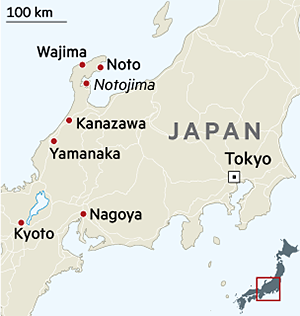
Also part of the group are Arthur and Trudy Golden, keen to retrace a bike route they took together 18 years ago. And it’s fitting that they should return in 2017: Arthur is the author of Memoirs of a Geisha and this year marks the novel’s 20th anniversary.
It was a bold move for a male American author to voice a geisha, one of the most enigmatic female personas in existence. The gamble paid off: the book sold more than 4m copies in English, was translated into 40 languages, became an Oscar-winning film and was — for westerners at least — a glimpse into the mystique of Japan. Arthur has agreed to help our guides explain the puzzle of Japanese culture that we’ll encounter on our journey.
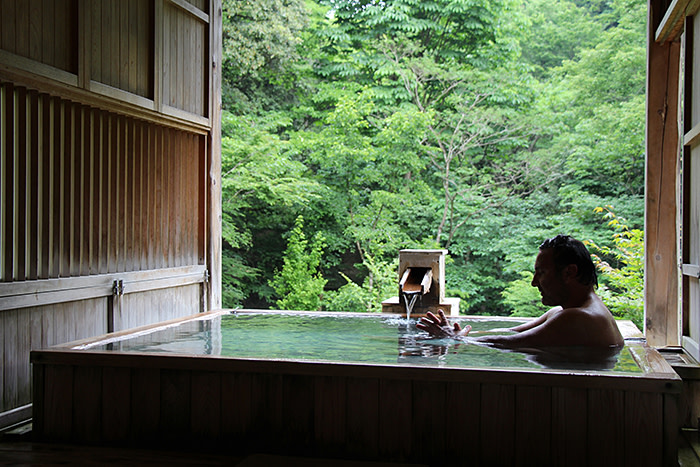
We stay in a series of ryokans, traditional inns in which we observe some of Japan’s beguiling customs and courtesies. We remove our shoes at the entrance, change into the yukata (cotton robe) laid out for us in our rooms, and pad about on varnished wood or cool tatami mats; we sleep on futons in simple bedrooms delicately adorned with sliding paper screens, a single flower and painted scroll; we eat exquisite kaiseki, multiple dishes of local ingredients presented with breathtaking artistry; and we bathe in onsen, hot spring baths with mineral-rich water that feels like silk on the skin. Arthur explains the formalities of bathing in the communal, gender-separated onsen: shower and scrub yourself clean first, and then slip into the water. It’s a national pastime and part of popular consciousness, but the ritual finds root in Japan’s indigenous religion: “Shinto is about purification and cleanliness, and you’ll find it in every element of the culture,” he says. “It’s also a religion that concerns itself with the purity of nature, so the baths will often be in settings that reflect that.”
At Lamp No Yado, a ryokan embedded in a craggy shoreline, the private onsen has a large window that frames the Sea of Japan. In the mountain village of Yamanaka, Kayotei (one of Japan’s most celebrated ryokans) also has a private bath, one that invites you to gaze over folds of forested hills. Being naked in nature has never felt so civilised.
In the fishing town of Wajima, we visit the Juzu shrine at dusk. Evening light streams through the slats of the handsome wooden structure and paper lanterns glow as we are given a Shinto blessing for our journey. Suddenly, several men burst in with masks of bark and wigs of seaweed, clacking sticks, banging a large drum and yelling cries of war. The sound reverberates through my chest. Their shadows loom large on the wall behind as they drum wildly and posture with menace.
This is a Gojinjo-daiko performance, a style of Japanese drumming specific to this region and a rare spectacle. The men are re-enacting for us the story of villagers fending off the feudal lord Uesugi Kenshin, whose samurai warriors invaded Noto’s beaches in 1576. The peasant farmers and fishermen used their makeshift costumes, drums, hoes and sickles to successfully scare their enemies away.
We continue to explore the rural charms of the peninsula by bike. Our route takes us along the coast, past squid trawlers and leaping dolphins, torii gates and the spectacle of Senmaida, 1,000 ancient terraced rice fields sloping into the ocean. Our guides Takuya, Ross McLean and Sakis Mits do an admirable job of top and tailing our string of cyclists, periodically steering us to their pop-up snack spots with fresh sashimi, succulent oranges and tart Fuji apples.
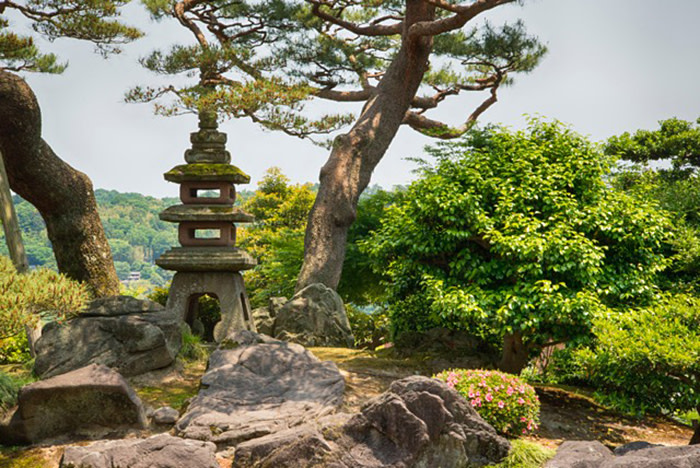
On one day, we circumnavigate Notojima, a volcanic island, stopping at the extraordinary Glass Art Museum set within a hilltop complex that looks like a space station; we lunch on cold soba noodles and crisp tempura in a quaint restaurant that materialises out of lush farmland, and we finish at a small Buddhist temple. Takuya explains the complex disciplines used in the meticulous garden, which features a 400-year-old cedar tree and a small fishpond teeming with giant koi.
When Takuya was 15, before he became a bike engineer and guide, he says he briefly trained to be a gardener. He dreamt of trimming trees to look like big bonsai. Like The Karate Kid, he had much to learn — beginning with how to walk. “You must move fast, but with flat feet — to leave no footsteps” he tells me. Just when he thought he’d mastered it, his teacher threw an object and Takuya ran clumsily to catch it. He failed the test. At Kenroku-en Garden in Kanazawa, one of the great gardens of Japan, Takuya’s story gives me fresh admiration for the workers using their fingertips to clear fallen leaves. They move lightly, with precision and pride. The 11-hectare garden is a living work of art: great bursts of irises and azaleas, gnarled trees, stone bridges, ponds and carpets of moss have all been calculated and coaxed to look entirely natural.
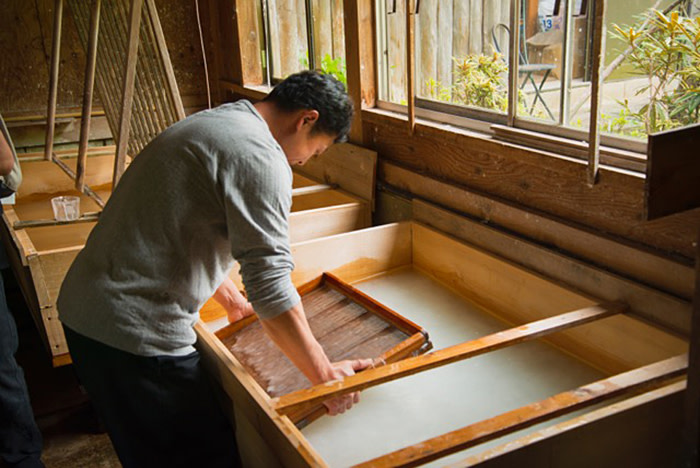
Dedication is poured into all of the Japanese artisanal practices we encounter: from the creation of lacquerware, to the ritual tea ceremony and the brewing of sake. In a humble cottage, we watch in awe as washi (fine Japanese paper) is made by hand. The third-generation papermaker mixes the bark of a mulberry tree (kozo) with ash and water; he beats it to a pulp with a stick for an hour to break the fibres before making slurry. He scoops and shakes a layer of slurry in a bamboo filter tray to interlock the fibres and form a thin sheet of paper, using a deft flick of the wrist to ensure it is an even thickness.
When it is still wet he lays natural embellishments into the sheet; today it’s a wisteria, but it might be sea shells, maple leaves or cherry blossom petals.
In Yamanaka we have a long, exhilarating descent under a canopy of cypress trees before we hop off our bicycles for the last time and transfer to Japan’s ancient capital of Kyoto. Strolling the narrow lanes of Gion, Kyoto’s renowned geisha district, is atmospheric — particularly when an off-duty geisha (or geiko in Kyoto dialect) teeters by in a kimono. Arthur translates the Japanese signage on traditional wooden buildings, pointing out an okiya (boarding house) where geisha initially live and train, and an ochaya (teahouse) where geisha entertain with music, dance, games and witty conversation.
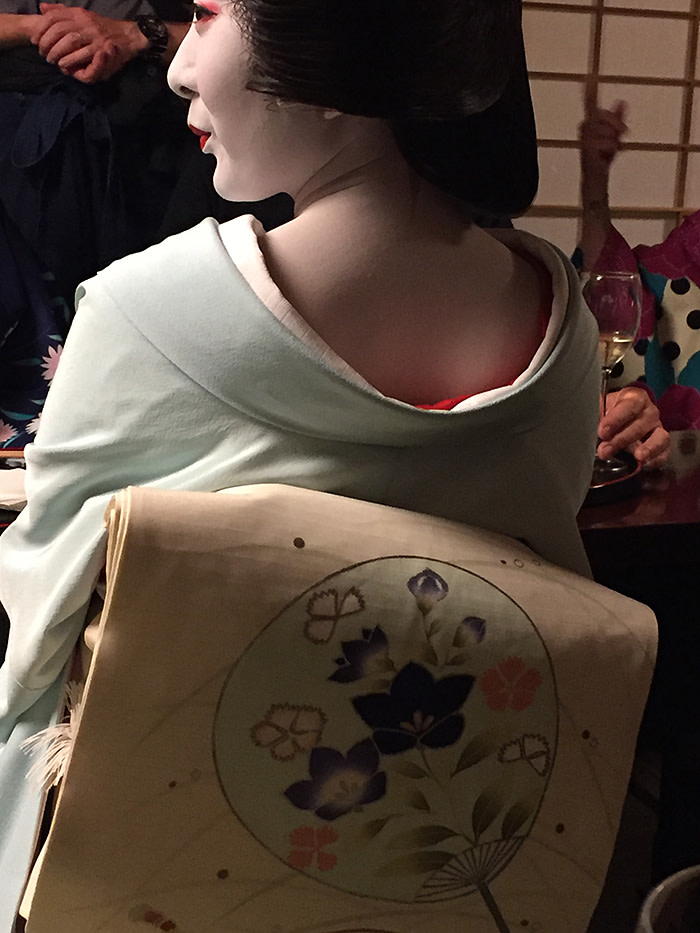
It was Arthur’s fluency in the language that sparked a conversation about Japanese attitudes towards the appropriation of their ethnic symbols. He so shocked a waitress when he spoke Japanese that she leapt back in a fit of giggles. “Sometimes foreigners seem to cross a line if they speak Japanese,” he explained. “Though Japan has absorbed cultural influences, they’ve built protective mechanisms surrounding their own identity — things that are distinctly Japanese — and that includes the language.”
What an imposter I must appear then, on our final night together, when I’m ceremonially dressed in a kimono at our hotel, the elegant Ritz-Carlton Kyoto. Kimono CosPlay (costume play) is a craze in Kyoto and you will see many people — both foreign tourists and Japanese youth keen to embrace their heritage — sightseeing in traditional Japanese robes. It gives me an insight into the complexities of kimono dressing — several layers of fabric are held in place with a series of knots, bows and tucks. After being pulled at and tugged tight, I walk out on to the streets of Kyoto in wooden sandals, bound for a banquet dinner at the Yoshikawa Inn.
Two young geisha slip quietly into the dining room to dance for us, resplendent in full make-up, shimada-styled wigs and silk kimonos. Their movements are restrained yet fluid, their gestures delicate and their gaze disarming. I feel awkward beside them. They are demure as they pour sake and speak softly of the rigorous preparation required to look and perform as they do. They hold us all utterly in their thrall.
Even when you see Japan with the benefit of Arthur’s understanding of the country, it’s hard to fathom its unique disciplines. But perhaps there’s symbiosis at work here: the Japanese keen to hold their culture close, us tourists happy for it to remain a challenge — otherworldly and perplexing. After all, what’s the point of an easy ride?
Details
Stephanie Drax was a guest of Butterfield & Robinson (butterfield.com), which offers a week’s trip from Noto to Kyoto from £7,280 per person, including meals, transfers, private tours and expert guides but not international flights. The next departures are in May and October
Comments